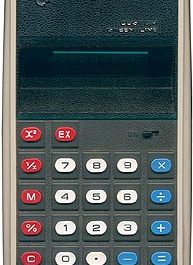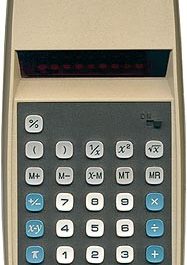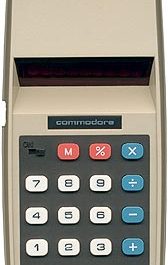
The Commodore SR4120D calculator is a scientific calculator that was produced in 1978. Manufactured by Commodore and assembled in England, this calculator incorporates components and boards sourced from Japan. A sign of the growing global nature of electronics manufacturing at the time.
The SR4120D is housed in a large, tilted, and bowed case crafted from textured black plastic, providing a sturdy feel. The display is protected by a heavily inset, tilted, and flat red plastic filter, which offers a clean and bright image, albeit with a narrow viewing angle. The calculator features bold, colored keys in red, blue, grey, and white, which are small and have a squishy, wobbly feel. The front outer edge, originally painted silver, usually shows signs of wear over time.

Powered by a 9V PP3 battery, the SR4120D also supports the use of an adapter through a socket located on the top side. It is advisable to remove the battery when using an adapter to avoid potential power conflicts. The calculator’s dimensions are approximately 80mm x 150mm x 40mm (width, height, depth), and it weighs 152 grams without batteries.
The display is a 12-digit red LED module with a bubble lens, capable of showing 8 digits with a 2-digit exponent in scientific notation. This setup allows for clear visibility of complex calculations. The SR4120D offers a wide range of features, including standard four functions, trigonometric functions, transcendental functions, and more. It also includes statistical calculations such as mean and standard deviation, along with a double memory system where one memory is three-function and the other is two-function.
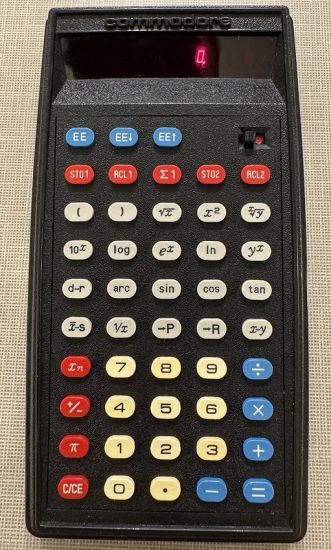
Under the hood, the SR4120D is powered by a MOS MPS 7200 4377 CPU, manufactured in the 43rd week of 1977. Additional components include an MPS7000 IC, two ITT 546A-5N display drivers, and various resistors and capacitors. The calculator is densely packed, with three boards connected by a thick ribbon cable. The main board sits above the keyboard assembly, which is fixed to the front with eight screws.
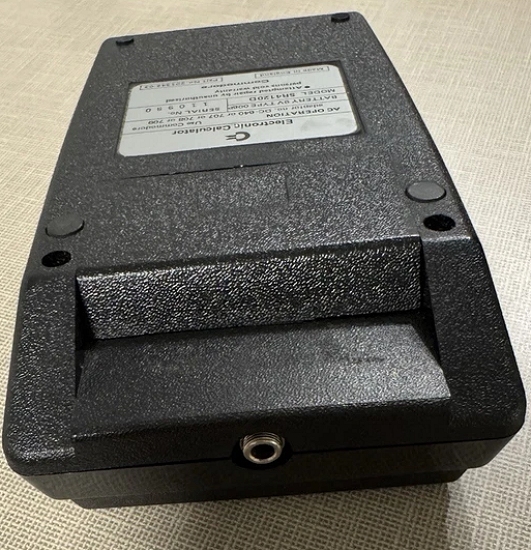
Logic:
- The (C/CE) key is used once to cancel an entry and a second time to clear the calculator.
- Input overflow is suppressed; keying a ninth digit is ignored.
- There is no constant function available.
- Negative numbers are displayed with a minus sign in the far left (twelfth digit), allowing for full eight-digit negative numbers.
- The change sign function can be used during or after number input but not before.
- Overflow, divide by zero, and underflow all result in an “E” in the far left (twelfth) digit and are not recoverable.
- Memory store is not indicated; users must remember the stored value.
- Twin memory usage is basic, with store and recall for each memory. To reset the memory, store zero. To add to “memory 1,” use the (sigma1) key.
- Overflow in memory results in an error but maintains the last total.
- When using the power key, the intervening log is displayed.
- Negative square roots result in an error state and are not recoverable.
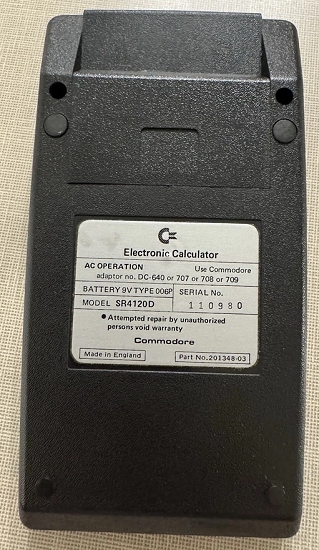
The Commodore SR4120D isn’t very easily found today. Overall, it is an interesting example of Commodore calculators of the time.
